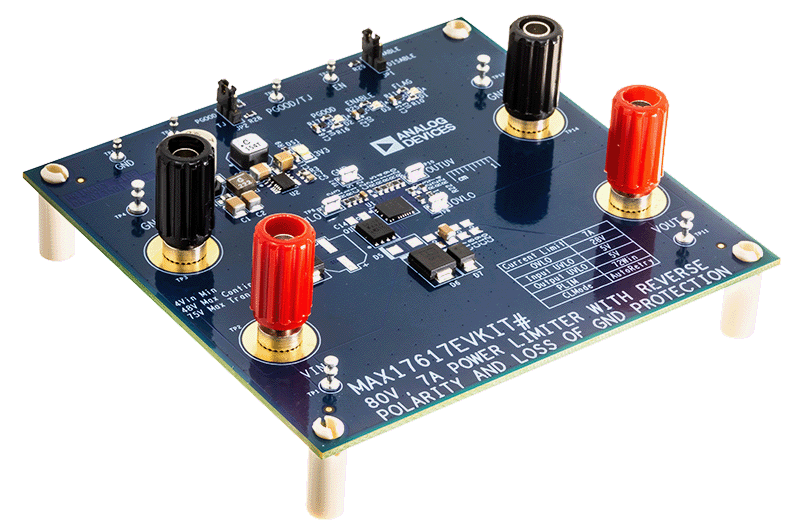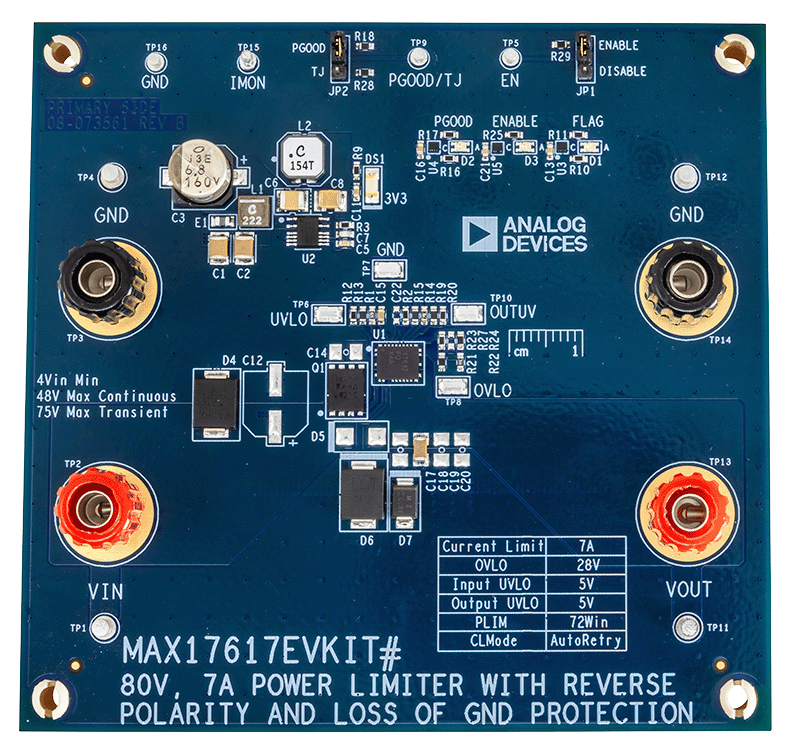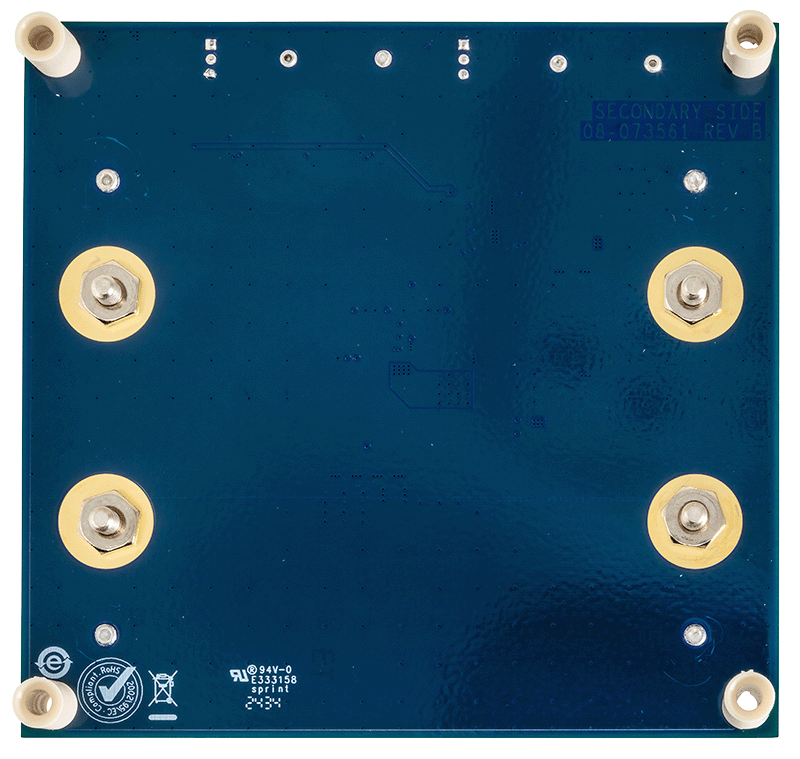The MAX17617/MAX17617A offers highly versatile and programmable protection boundaries for systems against input voltage faults and output overcurrent faults. In addition, MAX17617/MAX17617A offers a programmable power limiting function. Input-voltage faults (with positive polarity) are protected up to +80V (without Reverse Current Protection)/+75V (with Reverse Current Protection), by an internal nFET featuring low ON-resistance (20mΩ typ). The devices feature a programmable undervoltage-lockout (UVLO) thresholds by using external voltage-dividers. The MAX17617 features a programmable overvoltage-lockout (OVLO) while MAX17617A offers a programmable output voltage clamp function through the OVFB pin that features an output voltage limiting regulation during input transient surge events. Input undervoltage and overvoltage protection (MAX17617)/output voltage clamp function (MAX17617A) can be programmed across the entire 3V to 80V operating range.
Input reverse-polarity protection is realized using an external nFET that is controlled by the devices. The magnitude of reverse-polarity voltage protection is dependent on the operating load-bus voltage (VOUT) and the voltage-blocking capability of the external nFET. For example, for protection down to a -55V input range with VOUT = 30V, an external nFET rated at 85V is needed. The external nFET is also needed for the optional reverse-current protection. When used with a Reverse Protection external nFET (Q1), the devices prevent reverse current flow from load to source by turning off Q1. The reverse current thresholds and forward bias characteristics of the reverse current protection feature are tuned to achieve an ideal diode function suited for OR-ing and Power Multiplexer applications. If reverse polarity protection and reverse-current protection are not needed, SN and GN pins must be connected to IN. The devices are tolerant against accidental output reverse-polarity application due to incorrect wiring across the output terminals.
The current limit of the devices is programmed by connecting a resistor from the SETI pin to GND. The current limit can be programmed from 0.7A to 7.0A. When the current through the devices reaches or exceeds the set current limit, the resistance of the internal nFET is modulated to limit the current. The devices offer three current-limit behavioral modes: Continuous, Auto-retry, and Latch-off modes. In addition, the devices allow programmable startup inrush current limit during startup events, to prevent inrush current from limited power sources flowing into capacitive or negative impedance output loads.
Please see data sheet for the full description
Applications
- Input Voltage and Output Overcurrent Protections
- Loss of Ground Protection
- Surge Protection






